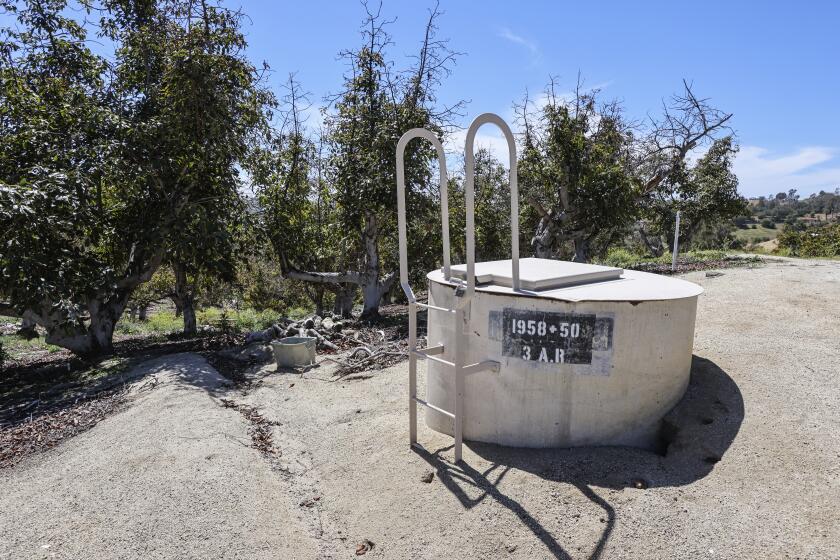Mosquitoes winning under climate change, salmon losing
California’s iconic natural features, from salmon runs to Joshua trees, could dwindle or disappear, as climate change rearranges the state’s weather patterns and landscape, leaving much of the state hotter and drier, scientists warn.
“The current four-year drought that we’re in might be a dress rehearsal for what climate change might be like for California’s terrestrial systems,” said Jim Thorne, a research scientists at UC Davis, who surveyed California’s ecosystems to determine how they are likely to change.
A series of reports have outlined those hazards, analyzing how California’s shifting landscape is likely to affect animals, plants and insects, including those bearing diseases such as West Nile and Zika.
“When we look through those assessments, generally, the species that tend to be most at risk are those that occupy very specific habitat niches, those who can’t easily change habitat, and ones where climate changes expected to occur in their area are very different from what they historically experienced,” said Whitney Albright an environmental scientist with the California Department of Fish and Wildlife’s climate science program
California has about 87 million acres of natural land, Thorne said. Between 15 and 50 percent — from alpine forests to freshwater marshes — could be seriously stressed by climate change, his report found.
“One of our most broadly distributed types is our mixed oak and conifer forest,” he said. “Those appear to be highly at risk. Particularly among some of the conifers right now, there is a tremendous amount of mortality in the state.”
As temperatures rise, species are likely to migrate northward and upward toward cooler climes. This could force plants and animals into less hospitable habitat, shrink their range or force them into competition with other species.
Some might not adapt. For instance, hotter weather in the Southwest is likely to eliminate Joshua trees from 90 percent of their range in 60 to 90 years, according to a report by the U.S. Geological Survey.
For species living on mountain tops or at the Northern end of their range, there may be nowhere to go. That could be the end of the line for animals like the pika, a small, round mammal that lives in mountain rock piles, Thorne said. The rabbit-like creature uses very specific areas, and is fatally sensitive to temperature. So as its habitat gets warmer, it can’t adapt.
“Some of the populations have winked out,” Thorne said. “We expect to see local extirpation of that species.”
California’s storied salmon runs also face uncertain futures under this new order.
“Most native fishes will suffer population declines and become more restricted in their distributions; some will likely be driven to extinction,” with cold water fish facing the highest risk, according to the report “Climate Change Vulnerability of Native and Alien Freshwater Fishes of California: A Systematic Assessment Approach,” published in the online journal PLoS ONE.
Chinook, Coho, pink and chum salmon were all ranked critically or highly vulnerable to climate change, a forbidding prospect for the state’s lucrative salmon fisheries. In the Sacramento River alone, salmon fishing is valued at more than $100 million annually, according to the U.S. Fish and Wildlife Service.
To reduce damage to sensitive species, scientists are exploring ways to improve habitat, restore water sources and protect corridors that allow animals to travel in search of food and shelter.
“We’re trying to think about how we build resilience into those species,” said Amber Pairis, director of the Director, Climate Science Alliance-South Coast. “That’s why habitat connectivity is so important.”
By contrast, other animals might adjust to changes, or even benefit from them.
The San Diego Museum of Natural History recently retraced a famous survey of the San Jacinto Mountains called the Grinnell transect. It found that some species found in the original 1908 study, such as the Lodgepole chipmunk, had vanished from the area, museum curator Phil Unitt said. However, another species, the chaparral chipmunk, had apparently taken its place, and was more numerous than in 1908.
Other species have followed warmer weather north to California. The brown booby, which typically dwells in the tropics, now frequents San Diego, and has nested on Coronado Island.
In some cases, though, the climate winners may be animals we don’t want to see more of, such as urban wildlife or disease vectors.
“Coyotes might be able to move to new locations,” said Thorne, who is completing a separate assessment on the effects of climate change on mammals. “Coyotes are also very flexible in what they eat, so they might be able to adapt to new food types.”
Mosquito-borne illnesses such as West Nile virus could rise in California, as warmer weather shortens the incubation time of the virus, according to the report “Safeguarding California: Reducing Climate Risk” by the California Natural Resources Agency stated.
Invasive Aedes mosquitoes, which transmit Zika and dengue fever, have been detected in California, including in a San Diego neighborhood, where health officials sprayed to kill the pests Friday. And Lyme disease could spread as tick season is extended in places where winters are becoming milder.
RELATED

The County of San Diego Vector Control Program sprays a neighborhood in South Park with mosquito pesticide for Zika prevention.






